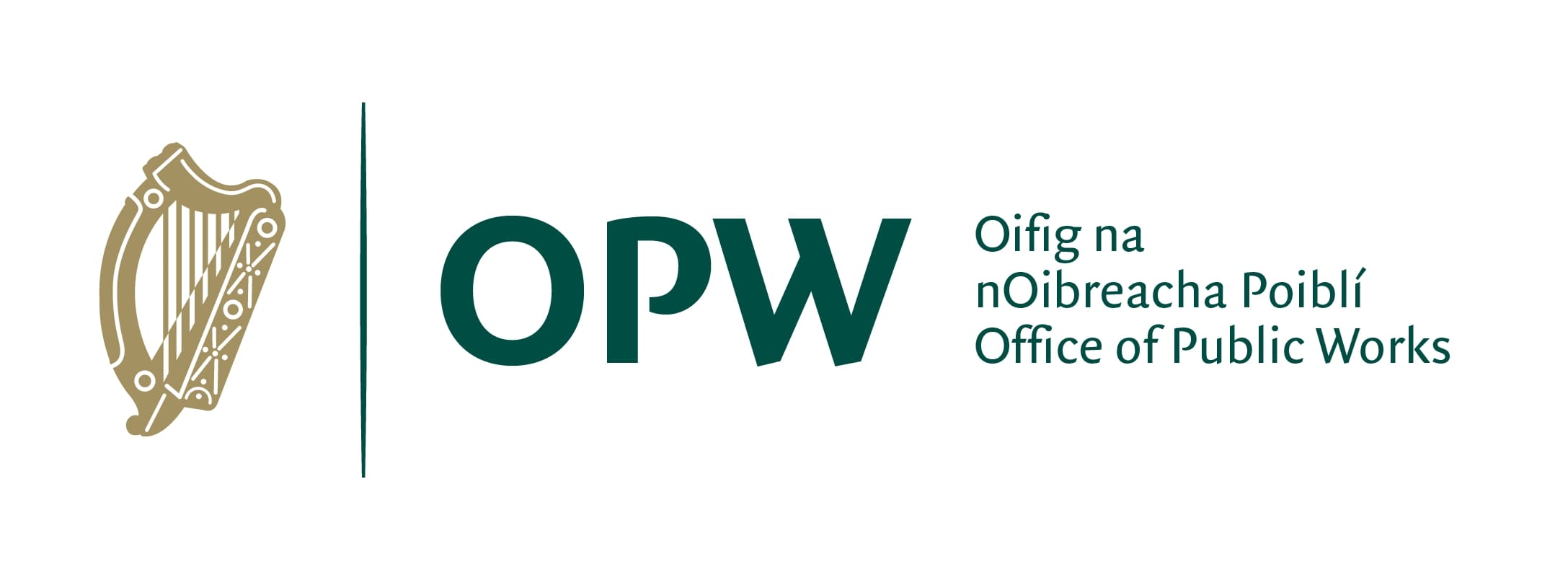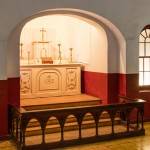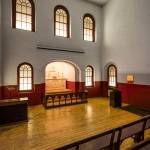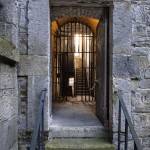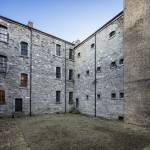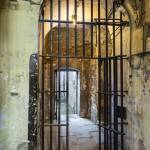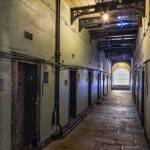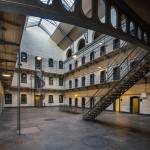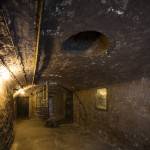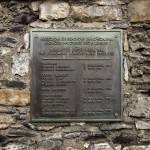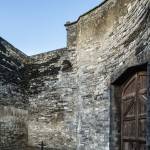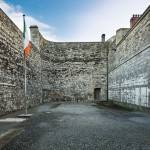The Chapel
There are two chapels inside the walls of Kilmainham Gaol – one Catholic and one Protestant. Only the Catholic chapel is open to the public today. This red-walled chapel is found on the first floor (the other chapel is on the top floor, and was painted blue). The wooden altar here was made in 1882 by Belfast carpenter James Lalor, an inmate at the time. Catholic prisoners generally attended Mass in this chapel every Sunday; it was sometimes the only place they would meet each other, depending on their level of isolation and the period in which they were inmates.
Perhaps the most famous incident to have taken place in this chapel was the eleventh-hour wedding of Joseph Plunkett and Grace Gifford in May 1916. The couple were married by Father Eugene McCarthy; the scene was lit only by prison-issue candles, and excepting their vows, they were bound to remain silent. Two soldiers bore witness. A few hours later, Plunkett was executed.
- Kilmainham Gaol: Catholic chapel. Peter Moloney Photography.
- Kilmainham Gaol: Catholic chapel. Peter Moloney Photography.
The West Wing
When the Gaol was first opened in 1796, there were two symmetrical wings flanking a central block. Today, just one of those wings survives in its original state, and that is the West Wing. This is the oldest section of the Gaol. There are now seventy-nine cells, but originally there were fewer, as extensions were added throughout the nineteenth century. This part of the Gaol is gloomy, dark, and cold. When first built, there was no glass in the windows, and no heating or light.
Notable political inmates who were incarcerated in this wing include members of the United Irishmen after the 1798 and 1803 Rebellions. Leaders of the Easter Rising in 1916, including Patrick Pearse, Thomas MacDonagh, Constance Markievicz, Thomas Clarke, and Michael Mallin were also held in the West Wing, as were women Republican prisoners during the Civil War.
This wing was also the scene of the famous 1921 escape by Ernie O’Malley, Simon Donnelly, and Frank Teeling. In its earlier history, the West Wing had been used for the worst-off of prisoners, such as those during the Famine who were imprisoned for stealing food, and those detained due to the Vagrancy Act.
- View from internal courtyard of west wing (Condemned Yard). Peter Moloney Photography.
- Internal courtyard of west wing (Condemned Yard).
- View towards internal courtyard (Condemmed Yard), west wing. Peter Moloney Photography.
- “1798 Corridor” with Civil War cell of DeValera on left. Peter Moloney Photography.
The East Wing
This new wing was built in the 1860s, to the design of architect John McCurdy, and reflected the new ideals of Victorian prison theory. Modelled on Jeremy Bentham’s Panopticon, every cell is visible from a central platform. There are ninety-six cells in all. Light is particularly important in this East Wing. The huge skylight was intended to fill the space with cleansing rays of sunlight. Light in the cells was restricted to a small window placed too high up for the inmate to see out – thus encouraging them to turn their faces heavenward. Punishment in this wing was carried out in a few underground chambers, which were almost completely dark. Members of the Fenian movement were held here in the late 1860s. During he Irish Civil War many prisoners in this wing went on hunger strike.
This wing is probably most familiar to popular audiences due to its use as a film location for some important movies through the years. These include Michael Collins, In the Name of the Father, and most recently, RTÉ’s Rebellion drama series.
- View of the East Wing with food lift on left. Peter Moloney Photography.
- Basement of the East Wing with view to holding cell and Parnell graffiti on wall. Peter Moloney Photography.
The Stonebreakers’ Yard
This is the most famous yard in Kilmainham Gaol. Originally, it was used for hard labour, and you can see a photograph of inmates at work in it here. Huts used to line the walls so that solitary labour was possible; these no longer survive, although their outlines can be seen in the ground. The yard was mainly used by men who had been sentenced to hard labour, and they would spend their time manually breaking up stones. Women who had received the same sentence would work out their time in the laundry.
It was here that fourteen leaders of the Easter Rising were executed in May 1916. This is commemorated today by a plaque and two crosses in the Yard.
- Plaque to the executed Leaders of 1916. Peter Moloney Photography.
- The Stonebreakers’ Yard with Connolly cross. Peter Moloney Photography.
- The Stonebreakers’ Yard. Peter Moloney Photography.
